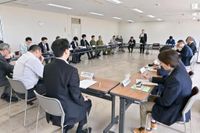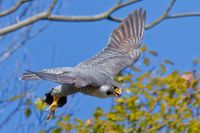Kagoshima Prefecture has confirmed a case of avian influenza in a duck hawk found in Amami City, marking a significant development in the ongoing battle against bird flu in Japan. On April 20, 2025, officials announced that a simple test on the hawk, discovered in a weakened state on April 19, had returned a positive result for the virus. This incident is particularly concerning as it represents the first positive finding of avian influenza on a remote island in the prefecture south of Tanegashima.
Experts are now on high alert, emphasizing that the virus could pose a threat to rare species such as the Ryukyu Kakesu, which inhabit the Amami region. The Ministry of the Environment has swiftly responded by designating a 10-kilometer radius from the collection point as a priority area for wild bird monitoring. In conjunction with local authorities, they have ramped up surveillance efforts to prevent the spread of the virus.
According to the prefecture, there are five farmers on the island raising over 100 birds, but none are located within a 3-kilometer radius of the infected hawk. A hearing survey conducted on April 20 revealed no abnormalities in the two households that do keep a small number of birds within that radius. Nonetheless, the situation remains precarious.
On April 21, the Oshima Branch of the Kagoshima Central Livestock Hygiene Center convened a disease prevention measures conference, urging approximately 20 local producers to inspect bird-proof nets and adhere strictly to disinfection protocols when entering chicken houses. Professor Makoto Ozawa, a virologist at Kagoshima University, pointed to the possibility that the infection source could be ducks migrating north from areas south of Amami. He stated, "The impact of infections spreading among wild birds nationwide is a concern that the virus is spreading further south." This highlights the interconnected nature of wildlife and the potential for rapid spread of pathogens.
In a related development, Hokkaido has also reported a case of highly pathogenic avian influenza. On April 21, 2025, officials confirmed the presence of the H5 subtype virus in a wild bean goose carcass collected in Sapporo City on April 14. This marks the 82nd confirmed case of avian influenza in wild birds in Hokkaido since September of the previous year, underscoring the widespread nature of the outbreak.
In response to the escalating situation, the Ministry of Agriculture, Forestry and Fisheries announced on April 21 the temporary suspension of imports of live chickens and chicken meat from Kansas, USA. This decision came after the US Animal Health Authority confirmed the presence of highly pathogenic avian influenza at a chicken farm in Reno County, Kansas. The Japanese authorities acted quickly to mitigate any potential risks to domestic poultry and wildlife.
The import suspension specifically targets live chickens and chicken products from Reno County, effective from March 25. This precautionary measure reflects Japan's commitment to protecting its agricultural sector and wildlife from the threats posed by avian influenza.
As the situation unfolds, experts are urging the public to remain vigilant. They stress the importance of reporting any sightings of dead birds to local authorities, which can help in managing and containing the spread of the virus. The risks associated with avian influenza extend beyond poultry farms; the potential impact on wildlife, especially rare species, raises significant ecological concerns.
In summary, the recent findings of avian influenza in both Kagoshima and Hokkaido highlight the ongoing challenges faced by Japan in controlling this virus. With the potential for spread among wild birds and the implications for agriculture, health officials and experts are working tirelessly to monitor and respond to this pressing public health issue. The situation serves as a reminder of the delicate balance between wildlife health and agricultural practices, and the need for continued vigilance as these events develop.





